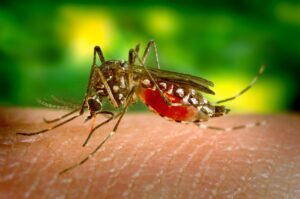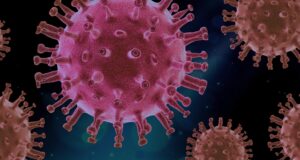The vagina monocultures

Johns Hopkins team develops donor screening for vaginal microbiota transplantation
Redistributed by neucrad health September 11, 2019
Source: frontiers by Matthew Prior, Frontiers science writer
Researchers at Johns Hopkins have taken the first step towards trials of vaginal microbiota transplantation (VMT).
Inspired by the success of fecal transplantation, it is hoped that transplants of vaginal fluids from healthy donors will provide the first restorative, curative treatment for bacterial vaginosis.
Published in Frontiers in Cellular and Infection Microbiology, the team’s donor screening concept aims to ensure that only beneficial microbes are transferred by VMT – and not potential pathogens.
Conceptual Design of a Universal Donor Screening Approach for Vaginal Microbiota Transplant
► Read original article
► Download original article (pdf)
Bacterial vaginosis
For gut health, bacterial diversity is key. But in the vagina, it can spell disaster.
As far back the 1800s, a Lactobacillus-dominated vaginal microbiota was known to reduce the risk of sepsis post-childbirth. Hundreds of years on, loss of this Lactobacillus monoculture – resulting in greater bacterial diversity or ‘bacterial vaginosis’ (BV) – is associated with increased risk of STIs, UTIs, preterm birth and reproductive tract cancers.
Yet even now, we cannot fix this simplest of bacterial communities. “We have very few treatment options available for BV, none of them fully curative or restorative,” says study co-author Dr. Ethel Weld.
In gut dysbiosis, fecal transplants from healthy donors have shown tremendous success in restoring bacterial diversity, with positive health benefits. Could vaginal fluid transplants restore protective Lactobacillus monoculture in BV sufferers?
“There is significant epidemiological evidence that vaginal microbiota transfer already occurs, for example between women who have sex with women,” explains Weld, who sees great potential in the vaginal microbiota transplant (VMT). “But before clinical trials of VMT are conducted, we must first determine how to screen donors to find those with minimal risk of transmissible pathogens, and optimal vaginal microbiota for transplant.”
Vaginal microbiota transplantation
Weld and colleagues designed a universal screening approach for VMT donors, which they piloted in a small sample of 20 healthy women aged 23-35.
The screening consists of a medical questionnaire with blood, urine, and vaginal swab and fluid testing. As well as checking for exposure to STIs and other infections, analysis of the samples allowed the team to correlate vaginal bacterial community structure with function.
The results support a testing hierarchy, whereby unfit samples can be screened out with cheap but reliable tests. More expensive and prolonged confirmatory testing – like additional safety checks and Lactobacillus ‘dose’ grading – can then be reserved for the most promising donors.
What constitutes the ‘ideal’ donor bacterial profile, and whether this depends on the recipient, are open questions. But this pilot study provides some insights. For example, vaginal fluid samples dominated by the Lactobacillus species L. crispatus tended to have higher protective lactic acid content, lower pH, and greater HIV barrier function, in agreement with previous studies.
In search of super donors
What the study shows perhaps best of all about the ideal VMT donor, is that she is rare.
“Based on our exclusion criteria, 7/20 (35%) of these participants might be eligible VMT donors,” says co-author Dr. Laura Ensign. “But the actual success rate for participation as a VMT donor in a clinical trial will likely be much lower still.”
The participants were selected from the study team’s previous clinical studies, increasing the likelihood that they would fulfill the donor criteria. Most were White or East Asian women, who in the U.S. are least likely to have BV. Ensign encourages efforts to recruit a more diverse donor pool, to identify whether there is any impact of race or ethnicity on VMT success.
And besides invasive screening, the privations of vaginal fluid sample collection are likely to deter many would-be donors. “Out of an abundance of caution, we propose that donors abstain from vaginal intercourse for the duration of longitudinal sample collection,” suggests Ensign. This could amount to 30 days or more without sex.
As such, the success of VMT might depend on a small number of willing ‘super donors’.
“Once a safe donor has been identified using this protocol, she could donate on multiple appropriately screened occasions; the idea of a ‘super-donor’ with no identified past or current infections and with favorable Lactobacillus-dominated microbiota is one that should be explored.”
Ultimately, understanding the role of minority bacterial species and their products could enable VMT to progress beyond the need for donors.
“We anticipate that the trajectory of VMT will likely follow that of fecal transplantation, with efforts to cultivate uniform, standardized transplants that have similar therapeutic efficacy to donor material,” concludes Ensign.
Original article: Conceptual Design of a Universal Donor Screening Approach for Vaginal Microbiota Transplant
N:B – The article may have changed in shape, size and image presentation.








